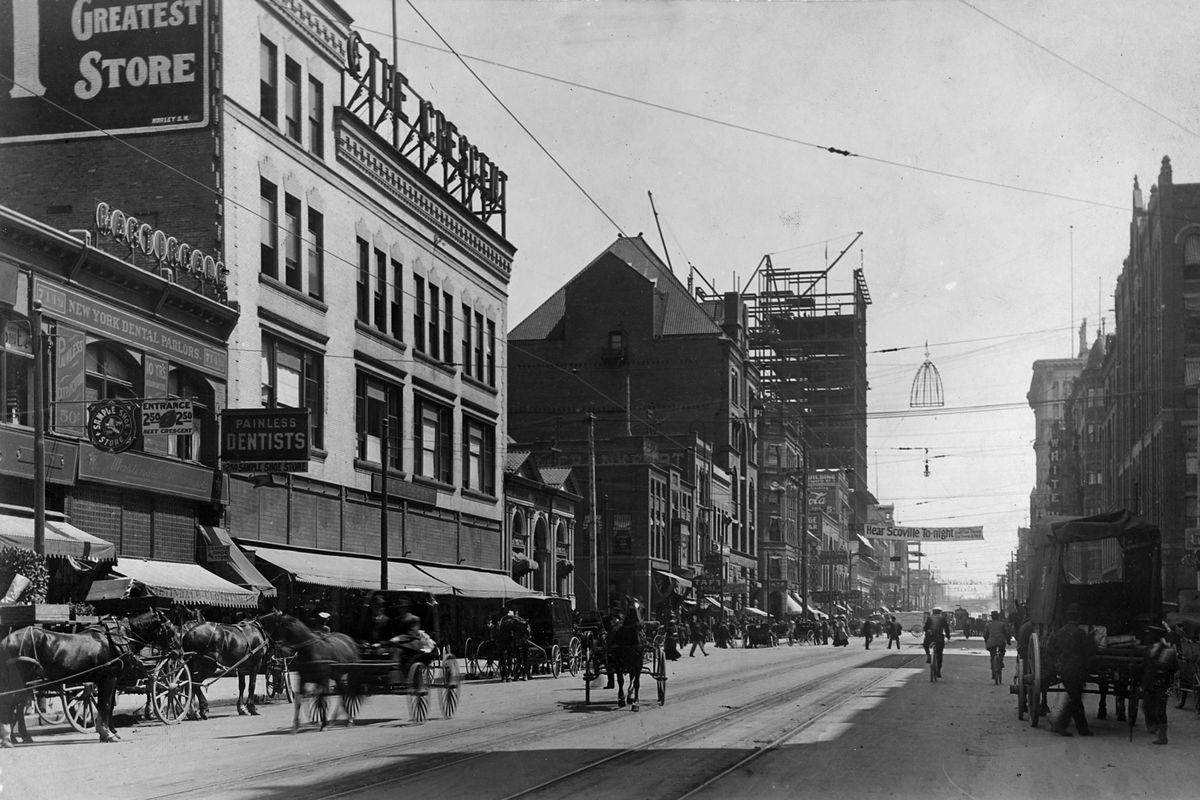Then and Now: New York Dental Parlors

Dentists in early Spokane could ease a patient’s pain and anxiety with laughing gas, ether or various formulas of cocaine and morphine. But chances were that patients avoided the dentist until the pain became unbearable.
“Extractions! 50 cents!” read the signs outside the New York Dental Parlors office. “Painless!” was touted in every ad. Novocain wasn’t sold until 1906. Before the early 20th century, it was wise to question the credentials of the man with the pliers. An ad for one of the many New York Dental Parlors proclaimed, “We guarantee all work to be done by good reliable workmen!”
Bargain dental parlors were often run by “street dentists” with little training. They attracted customers with glowing advertisements, discount prices and “written guarantees.” The shady dentists operated under trade names that hid the owners’ lack of qualifications. After constant complaints about botched crowns and broken jaws from energetic extractions, the public sentiment soon turned against untrained dentists and states slowly began instituting training standards, licensing and making dentists practice under their own names for more accountability.
One of the early charlatans was Edgar Randolph Parker, of Brooklyn, N.Y., who officially changed his name to “Painless Parker” and started a chain of dental parlors. He had been kicked out of dental school for offering tooth extractions door-to-door. But New York state forced him to practice under his real name, even though his parlors stretched from New York City to Bellingham, Wash.
A 1919 Michigan Dental Society publication called for more sober promotion of good practices. “We have ‘painless dental parlors’ all over our land, in every one of which painful operations are performed.” In 1932, the Spokane Dental Society advocated that advertising by dentists must be educational in nature and reviewed by a committee of their peers.
– Jesse Tinsley